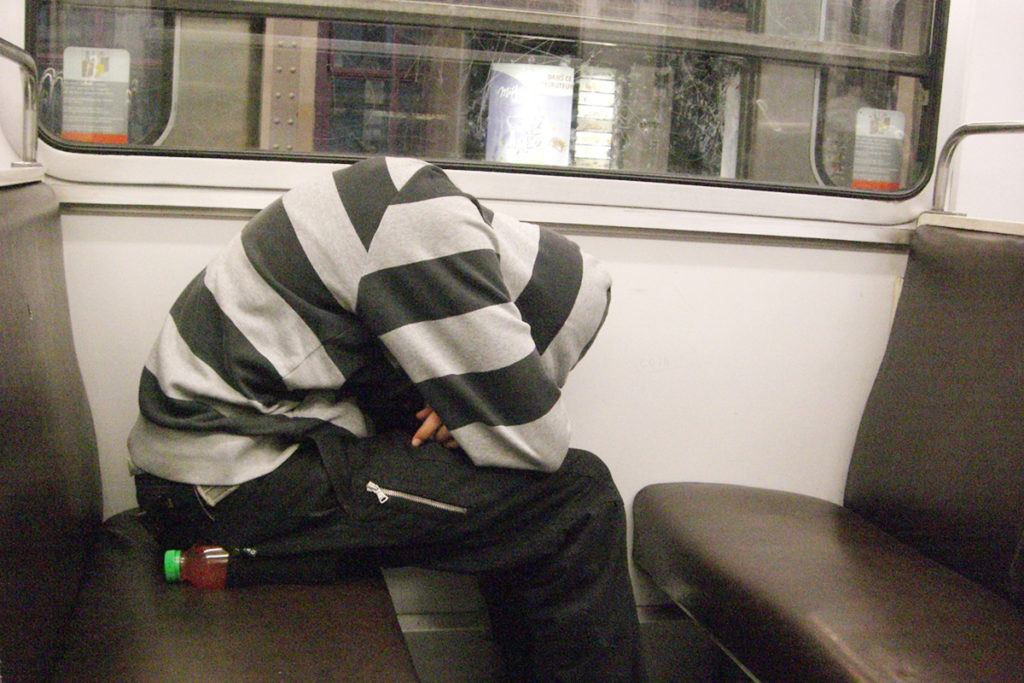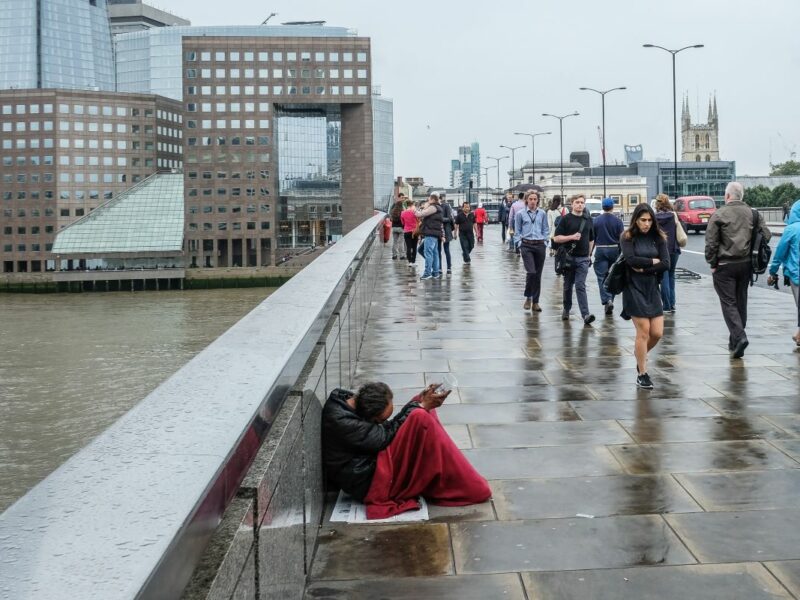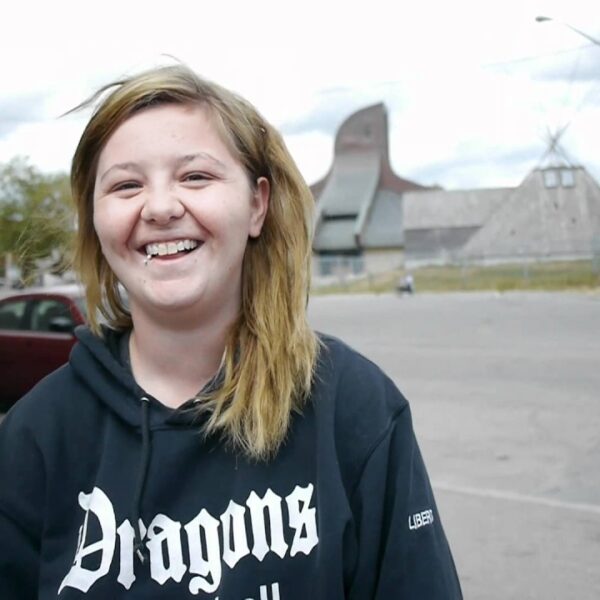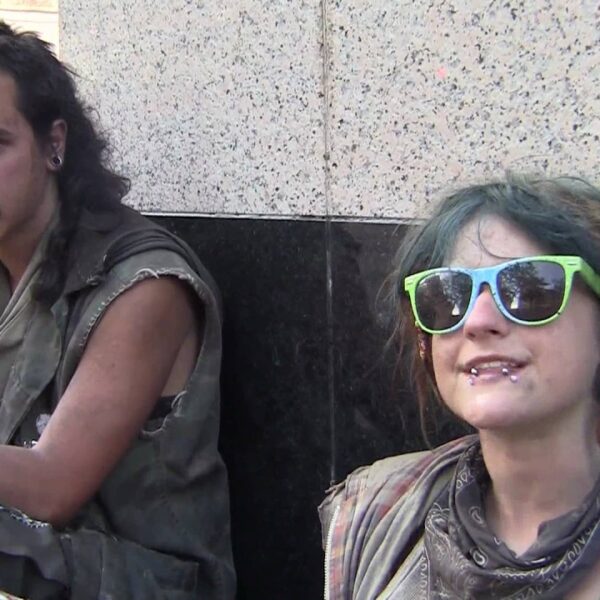Rough sleeping has increased by 169% since 2010, igniting public criticism of the Government’s approach to homelessness and social welfare. However, despite being the most visible and brutal form of homelessness, rough sleeping only accounts for a tiny percentage of the UK’s homeless population.
The problem is far worse than most people envisage. In 2018, while 4,677 people were reported to be sleeping rough on any given night, a further 320,000 people were also estimated to be homeless.
Homelessness comes in many forms. It can be the teenager sleeping on the top deck of a bus; the full-time employee living out of their car; the single mother refused rented accommodation because she receives benefits. These are the people hidden from the public eye; the hidden homeless.
What Is Hidden Homelessness?
Hidden homelessness refers to the insecure, dangerously unsuitable, yet invisible living situations of thousands of people across the UK.
The term includes people who seek “alternative” forms of accommodation rather than seeking help from housing services. These individuals include squatters, sofa surfers, and public transport-surfers. By seeking alternative forms of accommodation, they are invisible to the Government.
It is estimated that on any given night in London alone, 12,500 people are staying in inadequate shelter.
People living in local authority provided temporary accommodation. People on housing benefit arguably can also be described as hidden homeless. Despite being under the Government’s protection, these people are often forced to live in cramped, substandard, and insecure housing leaving them teetering precariously on the edge of ‘true’ homelessness.
Hidden Homeless People Are Often Visible to the Government, but Receive Little Meaningful Help
In October 2017, as Prime Minister Theresa May announced £2 billion more in funding to build affordable homes, the BBC interviewed families being charged £200 per week to live in a disused pub:
“This isn’t a squat. This isn’t the product of some slum landlord. This was provided by the state.”
This is an example of the extremities to which local authorities will go to provide people with temporary accommodation.
Temporary accommodation is state-provided housing for people in priority need, such as households with children or people with disabilities.
According to the latest Government figures, in the first half of 2018, 82,310 households were accepted into temporary accommodation, of which common types include hostels, private hotel rooms, and bed and breakfasts.
With increasing demand, local authorities are struggling to cope with the growing number of people becoming homeless, forcing the standards of housing to drop. Temporary accommodation is becoming more ‘imaginative’, overcrowded, and unfit for purpose.
In theory, temporary accommodation is a stopgap to prevent households from becoming homeless while their long-term housing applications are considered. However, people are often left living in a state of limbo for years.
For example, Watford Borough Council states on its website: “There is no set time for staying in temporary accommodation… For families, the average wait… can be over three years”.
Households are also often moved from place to place at the local authority’s absolute discretion.
Bristol City Council states on its website: “You may have to share kitchen or bathroom facilities… We may move you to different accommodation at short notice.”
Ultimately, there is no guarantee a person’s long-term housing application will be accepted, adding to households’ insecurity and stress.
Why Do People Become Hidden Homeless?
There are many reasons why a person may experience homelessness and housing insecurity, including:
- Degradation in the supply of social housing
- A lack of access to privately rented accommodation due to decreasing supply, rising rents, and stagnant wages
- Domestic abuse
- Family breakdown
- Ill health or disability
Years of Government cuts to welfare and social services, insufficient protections for tenants, and a nationwide failure to build enough affordable homes or social housing has priced tenants out of the privately dominated housing sector. In 2017, 28% of homeless households in priority need had been evicted from privately rented accommodation.
Ironically, housing benefit is one common reason many households cannot secure safe, secure accommodation. Many private landlords refuse even to consider tenants on housing benefit.
Despite blanket bans on housing benefit being legally held to be discriminatory in 2018, leading letting agencies continue to operate ‘no DSS’ policies.
Unfortunately, hidden homelessness tends to affect the most vulnerable in society. Groups likely to be affected include:
Young people who are not in priority need:
In 2017, the London Assembly Housing Committee assessed that family and relationship breakdown was a leading cause of hidden homelessness in young people.
LGBT people made up a quarter of the youth homelessness statistic with transgender youths being worst affected.
Victims of domestic violence:
Solace Women’s Aid reports that, although victims of domestic violence are entitled to local authority support, many are accused of making themselves “intentionally homeless” for leaving an abusive situation and denied housing assistance.
Those without access to social services:
Asylum seekers are at particular risk of becoming hidden homeless before asylum is granted, as any attention from the state carries the risk of deportation.
What Are the Consequences of Hidden Homelessness?
People experiencing hidden homelessness often have unacceptably poor qualities of life, and face problems such as:
- Housing insecurity
- Poor living conditions from shared and squalid accommodation
- Accommodation which causes a danger to life, such as squatting in dilapidated buildings
- Danger to personal safety
- Physical health impact such as asthma, chilblains, back problems, and poorly treated chronic conditions
Mental health impact due to the emotional toll of continually trying to find and retain shelter - Exploitation: vulnerable people may easily be coerced into prostitution, abusive relationships, or modern slavery
- Criminalisation for offences such as soliciting
What Needs to Change?
In 2017, faced with the dramatic increase in rough sleeping, the Conservative Government passed the Homelessness Reduction Act, which came into force on April 3, 2018. The Government also invested a lump sum of £1.2 billion into local authorities and housing services.
The Act extends local authorities’ duties so that, even if a person is not in priority need (most likely to be single people without children), their local authority is required to provide advice regarding homelessness rights and prevention.
It is too early to tell whether the Act has reduced the number of people entering temporary accommodation. However, we do know that it fails to address the thousands of hidden homeless people who do not seek government assistance, nor does it address the country’s affordable housing deficit.
People are often reluctant to seek housing assistance because they’ve had negative experiences with services in the past. Therefore, as well as extended duties, there must also be a major cultural shift in the way housing services are delivered, including:
- Clearly signposted services and a reduction in individuals being ‘passed around’ without receiving any meaningful help
- Improved coordination between services, such as between a local authority and an individual’s mental health team
- Increased availability of services targeting specific groups, such as LGBT and youth homelessness
- Improved vulnerability assessments. For example, victims of domestic violence should not be labelled “intentionally homeless” for leaving an abusive situation
While these improvements might improve the general administration of social services, the lack of affordable housing stock will continue to perpetuate housing insecurity and hidden homelessness.
Shelter estimates that three million more social homes will need to be built over the next 20 years to fix the current rented housing crisis.
Until the affordable housing deficit is addressed, thousands of people will continue cycling between substandard temporary housing, sofa-surfing, squatting, and rough sleeping, and the number of hidden homeless will not decrease.













